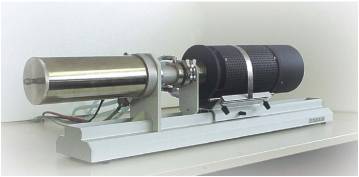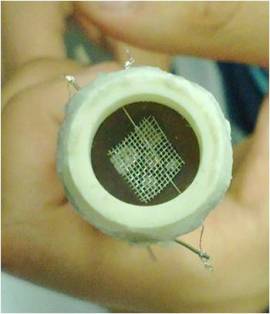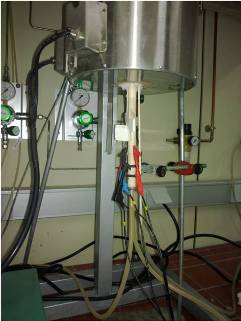The preparation of cathode materials for SOFC is carried out by citrate techniques, simply followed by a thermal treatment in air at the adequate temperature to stabilize the wanted phase. The preparation of anode materials requires, by contrast, the treatment of the previously “oxidized” sample into a “reduced” material, which must be stable in the reducing conditions of the fuel (H2 or CH4).
Study of the electrical properties.
Once characterized the chemical composition and stability, oxygen stoichiometry and cationic ratios of each synthesized phase, which is of great importance to understand the defect-chemistry that would govern the transport properties, the study of the electrical behavior at the working temperature of the SOFC is of the paramount importance to evaluate the possible application of each material as cathode or anode.
For this purpose, we carry out four-probe dc and/or electrochemical impedance measurements as a function of temperature (25-1000 ºC) and oxygen partial pressure; the required equipment (Autolab potentiostat-Galvanostat) is available in our laboratory.
Thermal expansion measurements.
 For the measurements of thermal expansion and electrical conductivity dense pellets are required. Thermo-mechanical measurements are used to study the sintering behaviour in order to obtain pellets of the appropriate density.
For the measurements of thermal expansion and electrical conductivity dense pellets are required. Thermo-mechanical measurements are used to study the sintering behaviour in order to obtain pellets of the appropriate density.
In order to analyze the mechanical compatibility between the different SOFC components, thermal expansion measurements (performed in a Linseis dilatometer available in our laboratory) are carried out on dense pellets to determine their characteristic thermal expansion coefficients (TEC’s).
Study of the polarization resistance in the electrode-electrolyte interface.
The electrode activity of every cathode or anode material are evaluated by the interfacial polarization resistance deduced from impedance spectroscopy measurements in either a symmetrical cell configuration (OCV) or in a three electrode cell (OCV and under DC current) as a function of temperature in under different gas atmospheres. The interface processes will be analyzed by fitting the experimental data to an equivalent circuit using the Zview program.
Evaluation of the selected electrode materials in a single cell
 The performance of the new electrode materials are tested in a fuel cell, in an electrolyte supported configuration. Pellets of different electrolytes (typically YSZ, LSGM or GDC) are conformed as thin pellets (typically 300µm) and sintered at high temperatures (1400ºC); inks of both electrode materials are deposited by screen printed processes and sintered in air.
The performance of the new electrode materials are tested in a fuel cell, in an electrolyte supported configuration. Pellets of different electrolytes (typically YSZ, LSGM or GDC) are conformed as thin pellets (typically 300µm) and sintered at high temperatures (1400ºC); inks of both electrode materials are deposited by screen printed processes and sintered in air. 
The single cell is set up on top of alumina tubes and introduced into a vertical furnace; the electrochemical measurement (typically voltage as a function of the current density) are be carried out at the working temperatures of the SOFC, in the range 650-850ºC. The measurements are collected with an AUTOLAB potentiostat -galvanostat.
